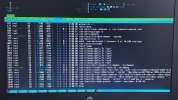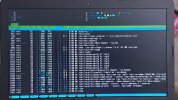I have installed FreeBSD 13.1, 64bit on a laptop
AMD A9-9425
12GB Ram
1TB HDD with UFS
After normal installation, added Xorg and LXQT with SDDM.
For first experiment
kern.hz=500
kern.eventtimer.periodic=0
kern.sched.preempt_thresh=171
On boot I dont login into the Desktop environment at the SDDM login screen
On another terminal say tty1, I login as root and start htop and wait for 10mins leaving the system as it is or idle u can say.
The load average is
0.19 ... 0.15 ... 0.08
Then I change only
kern.eventtimer.periodic=1
reboot and follow same proceedure.
The load average is
0.10 ... 0.04 ... 0.01
clearly showing that at idle CPU load average is less when
kern.eventtimer.periodic=1
Attached screenshots
AMD A9-9425
12GB Ram
1TB HDD with UFS
After normal installation, added Xorg and LXQT with SDDM.
For first experiment
kern.hz=500
kern.eventtimer.periodic=0
kern.sched.preempt_thresh=171
On boot I dont login into the Desktop environment at the SDDM login screen
On another terminal say tty1, I login as root and start htop and wait for 10mins leaving the system as it is or idle u can say.
The load average is
0.19 ... 0.15 ... 0.08
Then I change only
kern.eventtimer.periodic=1
reboot and follow same proceedure.
The load average is
0.10 ... 0.04 ... 0.01
clearly showing that at idle CPU load average is less when
kern.eventtimer.periodic=1
Attached screenshots




